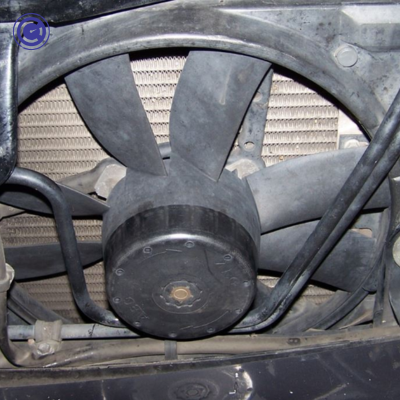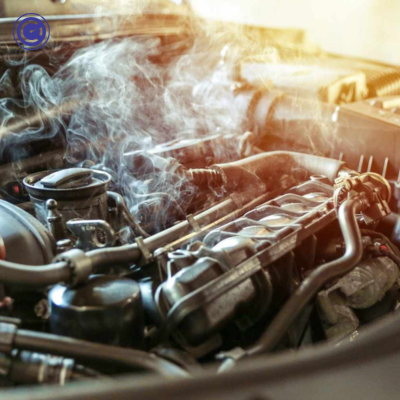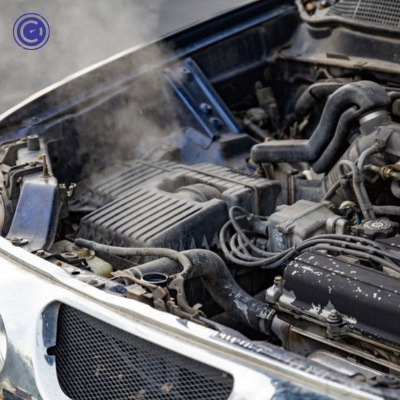As a car owner, one of the key components you need to be aware of is the radiator fan. It plays a pivotal role in maintaining your car’s engine temperature and ensuring it runs smoothly. However, like any other part, it can malfunction, leading to various problems. This blog aims to educate you about the symptoms of a faulty radiator fan, diagnose the issue, and offer solutions.
The radiator fan is essential in your vehicle’s cooling system. It helps maintain the engine’s optimal temperature by pulling air through the radiator, especially when the car is stationary or moving slowly. A functioning fan is crucial for preventing engine overheating, which can lead to significant damage if left unchecked.
Understanding the components of your vehicle is crucial to ensure its longevity and optimal performance. Among these components, the radiator fan plays a vital role in maintaining the health of your car’s engine. Let’s delve into what the radiator fan is, its function, and why it’s so important.
Table of Contents
What is a Radiator Fan?

The radiator fan is an integral part of your car’s cooling system. It is typically located near or attached to the radiator, which is part of the system that keeps your engine from overheating. The fan can be mechanically driven (connected directly to the engine) or electrically driven (powered by the electrical system).
The function of the Radiator Fan
The primary function of the radiator fan is to cool the engine coolant that flows through the radiator. Here’s how it works:
- Cooling Hot Coolant: As your engine runs, it generates heat. The coolant absorbs this heat and becomes hot. This hot coolant then flows through the radiator.
- Airflow Generation: The radiator fan generates airflow through the radiator when the vehicle is stationary or moving slowly, where natural airflow is insufficient.
- Heat Dissipation: The airflow generated by the fan helps in dissipating the heat from the hot coolant. The cooled coolant then circulates back into the engine to absorb more heat, maintaining the engine at an optimal operating temperature.
Importance of the Radiator Fan
- Prevents Overheating: Without the fan, the coolant would not be adequately cooled, leading to engine overheating, especially during idle or slow traffic conditions.
- Engine Protection: By preventing overheating, the radiator fan helps protect the engine and its components from heat-related damage.
- Efficiency: A well-functioning cooling system, aided by the radiator fan, ensures that the engine operates efficiently and with the least amount of wear.
Types of Radiator Fans
- Mechanical Fans: These are driven by the engine via belts and often have a clutch that controls the fan speed depending on the engine temperature.
- Electric Fans: These are powered by the vehicle’s electrical system and are controlled by sensors. They only operate when needed, making them more energy-efficient.
Symptoms of a Faulty Radiator Fan
A properly functioning radiator fan is crucial for maintaining the engine’s optimal temperature in your vehicle. However, like any mechanical component, it can develop faults over time. Being aware of the symptoms of a faulty radiator fan can help you address issues before they escalate into major problems. Here are the key signs to look out for:
Engine Overheating

The most immediate and noticeable symptom of a faulty radiator fan is engine overheating. This typically happens during idle or slow traffic conditions where natural airflow is not sufficient to cool the radiator. The temperature gauge on your dashboard may climb to the red zone, or an overheating warning light may illuminate.
Steam from the Engine Bay

If you notice steam coming out from under the hood of your car, it could be a sign of overheating due to a malfunctioning radiator fan. This steam is usually a result of coolant boiling over from the overheated engine.
Reduced Engine Performance

A failing radiator fan can lead to a noticeable decrease in engine performance. This happens because the engine operates at a higher temperature than normal, which can affect its efficiency and power output.
Unusual Noises
Listen for any unusual noises coming from the front of the vehicle, where the radiator fan is located. Grinding, whining, or clicking noises can indicate that the fan is struggling to operate, possibly due to a mechanical fault or an obstruction.
Fan Not Running
When the engine is hot, take a moment to visually check if the radiator fan is spinning. In cars with electric fans, the fan should kick in when the engine reaches a certain temperature. If it doesn’t, this is a clear sign of a problem.
Airflow Issues
A less obvious but indicative sign of a faulty fan is insufficient airflow through the radiator. You might notice this during a visual inspection or if the vehicle struggles to cool down after being turned off.
Diagnosing a Faulty Radiator Fan
Identifying the issue with a radiator fan is a critical step in ensuring your vehicle’s engine runs at an optimal temperature. If you suspect that your radiator fan is not functioning correctly, here are steps you can follow to diagnose the problem:
Visual Inspection

- Check for Obstructions: Begin by visually inspecting the fan and its surrounding area. Look for any debris, leaves, or other materials that could be blocking the fan blades.
- Inspect Fan Blades: Check the fan blades for any signs of damage or wear. Ensure they are intact and securely attached to the fan motor.
- Fan Movement: Gently rotate the fan blades by hand (with the engine off and cool) to see if they move freely. Any resistance or unusual tightness could indicate a problem.
Electrical Testing
- Check the Fuse: Locate the fuse that controls the radiator fan and check if it’s blown. A blown fuse is a common and easily fixable problem.
- Test Electrical Connections: Inspect all electrical connections to the fan for any signs of corrosion, wear, or loose connections. Use a multimeter to test for power at the fan motor connector.
- Relay Inspection: The relay is a critical component that controls power to the fan. Test or replace the relay if you suspect it’s faulty.
Sensor Testing
- Coolant Temperature Sensor: This sensor plays a crucial role in activating the fan. Check its condition and connectivity. Sometimes, a faulty sensor may not trigger the fan, leading to overheating.
- Thermostat Operation: Ensure that the thermostat is functioning correctly, as it can impact the operation of the cooling system, including the fan.
Professional Diagnosis
- Specialized Equipment: For a more comprehensive diagnosis, consider taking your vehicle to a professional mechanic. They have specialized diagnostic equipment that can accurately determine the issue.
- Expert Assessment: A mechanic can also check for less obvious problems, such as issues within the engine’s cooling system, that might affect the fan’s operation.
Additional Checks
- Fan Motor: If the fan blades move freely and the electrical system is functioning, the problem might be the fan motor itself. A mechanic can determine if it needs to be repaired or replaced.
- Systematic Approach: Remember, the issue might not always be with the fan itself. A systematic approach, checking each component of the cooling system, can help identify the problem accurately.
Conclusion
Recognizing and addressing the symptoms of a faulty radiator fan is crucial for the health and longevity of your vehicle. A well-functioning radiator fan is essential in maintaining the engine’s optimal temperature, preventing overheating and safeguarding against potential engine damage. Key symptoms like engine overheating, steam from the engine bay, reduced engine performance, unusual noises, the fan not running, and insufficient airflow are clear indicators that your radiator fan may require attention.
Ignoring these signs can lead to more severe problems, including significant engine damage, which can be costly to repair. Early diagnosis and intervention are vital. Simple actions such as checking for obstructions, inspecting the fan blades, and ensuring electrical connections are secure can prevent major issues. In cases where the problem is not immediately apparent, or if the issue persists despite basic troubleshooting, seeking professional assistance is the recommended course of action.
Regular maintenance and vigilance are your best defenses against radiator fan failures. By being attentive to the condition of your vehicle’s cooling system and responding promptly to any signs of malfunction, you can ensure that your vehicle remains reliable, efficient, and safe to drive. Remember, the radiator fan might seem like a small part of your vehicle’s intricate system, but its proper functioning is integral to the overall performance and health of your car.

